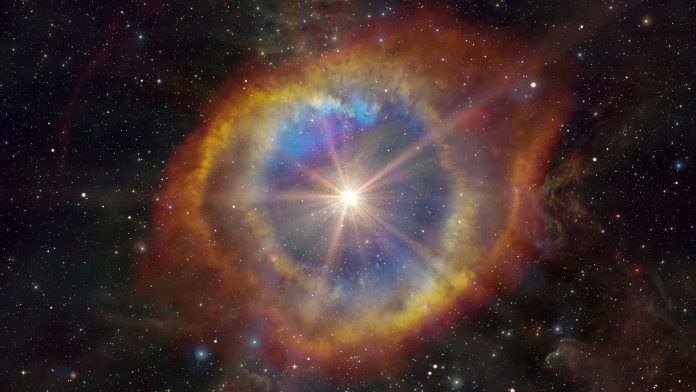Scientists have found that, during the process of electron capture, the neon inside a massive star can consume so many electrons in the core that it causes the star to collapse.
A team of scientists has discovered that, during a process called electron capture, the neon inside a massive star can consume such a high volume of electrons in the core, that it causes the star to collapse into a neutron star and produce a supernova.
These findings were made whilst studying the final fate of stars within eight to ten times the mass of our sun. This mass range is important because it includes the boundary between whether a star has a large enough mass to undergo a supernova explosion to form a neutron star or has a smaller mass to form a white dwarf star without becoming a supernova.
An eight to ten solar mass star commonly forms a core composed of oxygen, magnesium, and neon. At the core of a star there is an abundance of electrons in a dense space, whose energy is high enough to sustain the core against gravity.
Simulating the evolution of a star’s core
Once the core density of a star is high enough, the electrons is consumed by magnesium and then by neon, which also found inside the core. Previous studies have confirmed that magnesium and neon can start consuming the electrons, in a process called electron capture, once the mass of the core has grown close to the maximum mass of a stable white dwarf star, also known as Chandrasekhar’s limiting mass. There has been debate about whether electron capture can cause neutron star formation.
The team simulated the evolution of the star’s core, which is supported by the pressure of degenerate electrons against the star’s own gravity. As magnesium and neon consume electrons, their numbers decrease, and the core rapidly shrinks.
The process of electron capture also releases heat. When the central density of the core exceeded 10bn grammes per cubic centimetre, oxygen in the core starts to burn materials in the central region of the core, turning them into iron-group-nuclei such as iron and nickel. In this study, the temperature became so hot that protons became free and escaped. The electrons were then easier to be captured by free protons and iron-group-nuclei, and the density was so high that the core collapsed without producing a thermonuclear explosion.







